
Mumbai is known for its astonishing biodiversity ranging from forests, grasslands, hills & scrubs, the coast, freshwater, wetlands & mangroves. It has everything for a nature enthusiast keen to experience and learn from the vast thesis of nature study. And to do so one need not always travel far. There is so much to discover in and around our own city of Mumbai.
In the midst of our urban sprawl, there are many opportunities for bird watching and bird photography. We are new to bird watching and still learning the art of it. There is a certain kind of joy in doing so. It is simple and relaxing. You just need a good pair of binoculars, notebook, pencil and a lot of patience. And you will surely be amazed with the treasures of nature.


We went birding in the wetlands of Thane Creek. Nurturing our curiosity for nature we set forth on a rewarding journey of discovery of the avian beauties.
The Thane Creek in the eastern suburbs of Mumbai is an exceptional viewing site for birds. The ecosystem of the creek extends for nearly 17 km encompassing mangrove forests and waterbody. It is an Important Bird Area site as it is home to various avian species and thousands of flamingos and several other migratory birds visit the creek. In 2015, the area was declared as ‘Thane Creek Flamingo Sanctuary’. The greater and lesser flamingo are the two species found in the sanctuary who migrate to Mumbai to spend the winter in the mangrove wetlands. Apart from a variety of birds, the sanctuary is home to reptiles, a wealth of insects and spiders found during the second half of the monsoon. A Golden Jackal has also been spotted across several paths.
We visited the creek near Bhandup Pumping Station (BPS) on its western banks located near the Airoli bridge connecting the eastern express highway. BPS is Mumbai’s main sewage treatment plant where water is filtered to ensure we receive clean water from our taps. The water that comes to Mumbai through a number of lakes and dams via massive pipelines is filtered and treated at the plant.
Behind the pumping station after crossing the salt pans we reached the wetlands of the sanctuary. The wetland holds an international importance as it harbours rich mangrove and marine biodiversity and also supports the livelihood of many local fishing communities.
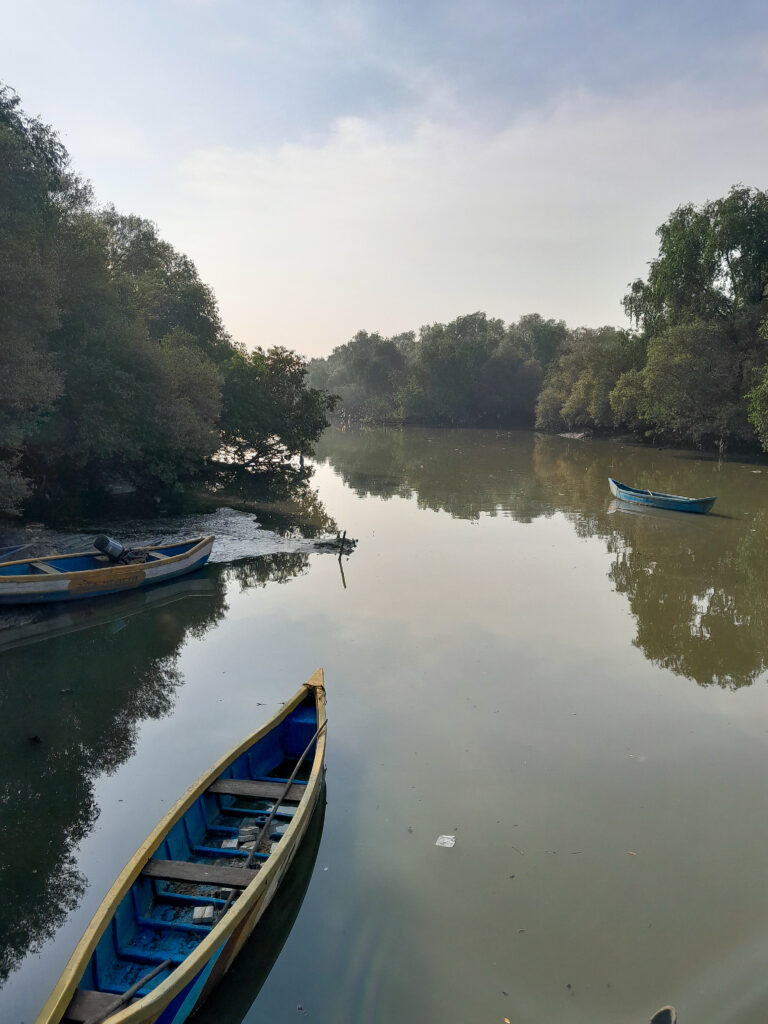


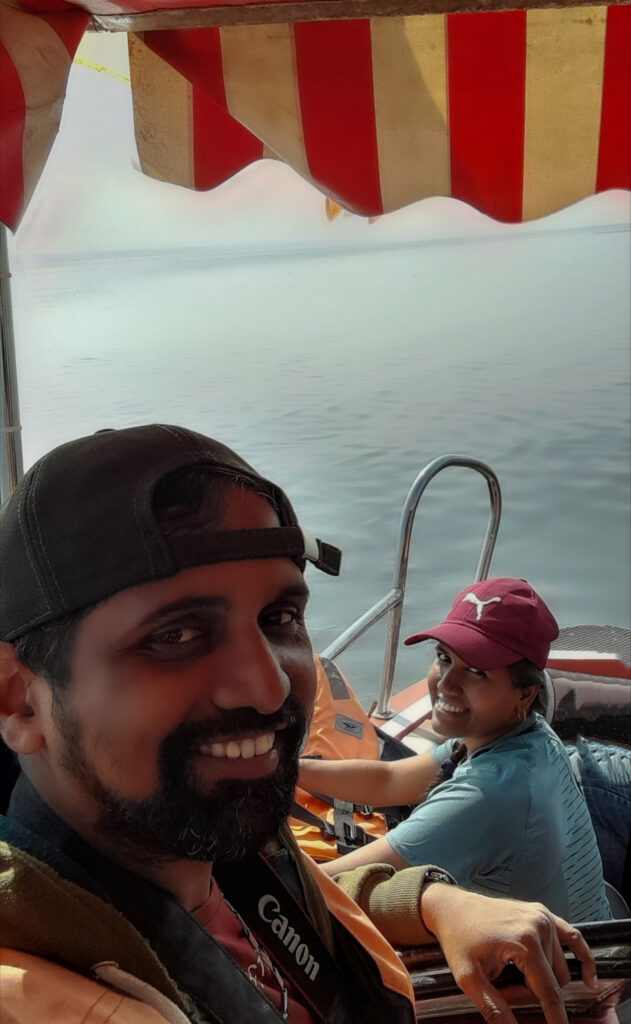
Leaving behind the concrete jungle life we had entered the birder’s paradise. A paradise which is frequently visited by photographers, bird watchers, conservationists and nature lovers. We went exploring the area and reached a bamboo bridge going to the edge of the water body which leads to the creek. A number of small fishing boats were moored there. It was a nice spot to observe the wildlife of the healthy mangroves and vast mudflats.
A flock of Black Kites roosted on different branches of a tree. An army of crabs and mudskippers lurked in the mangrove swamps. The Indian Pond Heron with a flash of white wings and tail flew and settled at the water’s edge. It looked beautiful with its short neck and buff browned back. A Little Cormorant spreading its wings sat drying himself on a rock while its other folks flew silently in a ‘V’ formation above the mangroves. A Common Sandpiper, a solitary bird, ran along the mud flats and hunted for food in the swamps. A Greater Spotted Eagle perched on a tree top at the edge of the water body while a Black Drongo with a forked tail looked for winged insects. Busy foraging in the open, White Breasted Waterhen, was seen moving solitary. Its chestnut undertail and white forehead looked beautiful.


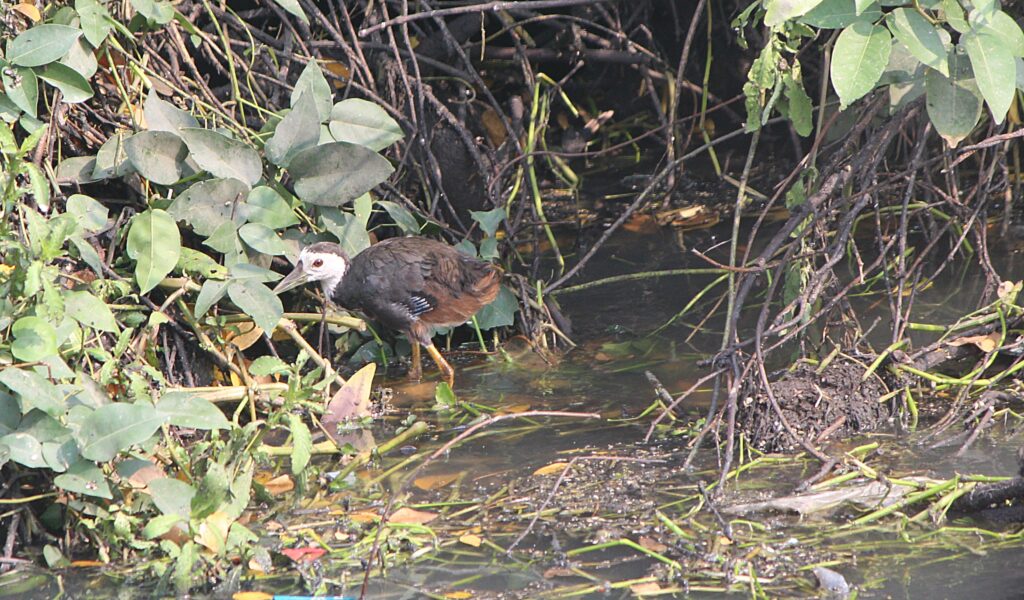
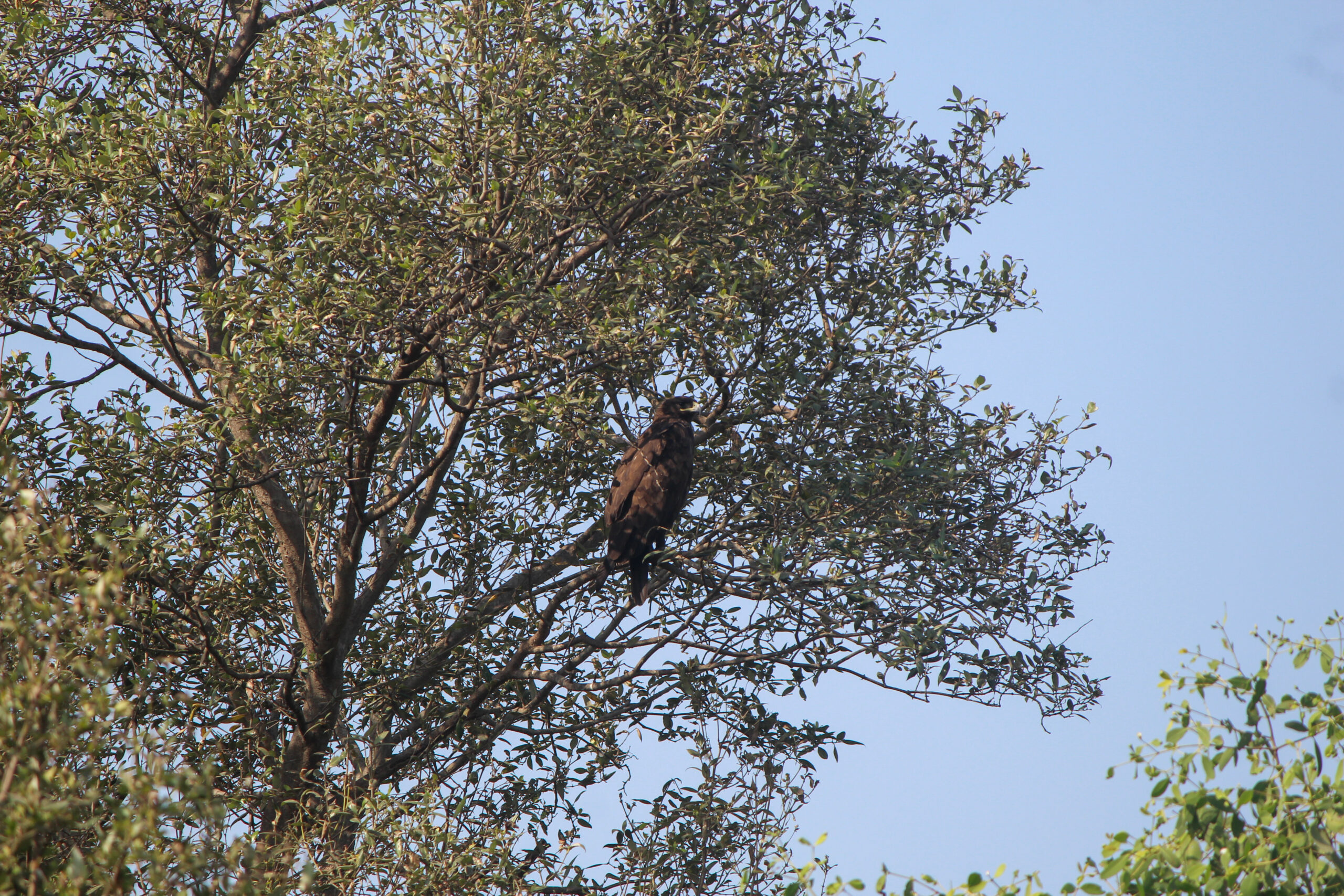

Further ahead, we went on a boat ride to witness the pink oasis in the midst of the concrete jungle of Mumbai where thousands of flamingos arrive every winter in the wetlands of Thane creeks. Along with the other migratory birds, flamingos have become the topmost attractions among the birding enthusiasts. These rosy-white birds with their slender legs, graceful neck, thick bill that curves downwards and large wings look so beautiful that to see them in large numbers is a treat to watch. Our boatman cum guide Mr. Bharat is very knowledgeable about the birds and knows the name of each and every bird he sees. He informs that the pink colour of the flamingo’s feather is due to its diet of algae that contributes to their fabulous pinkness. By the month of April-May which is their mating season, they turn completely pink.
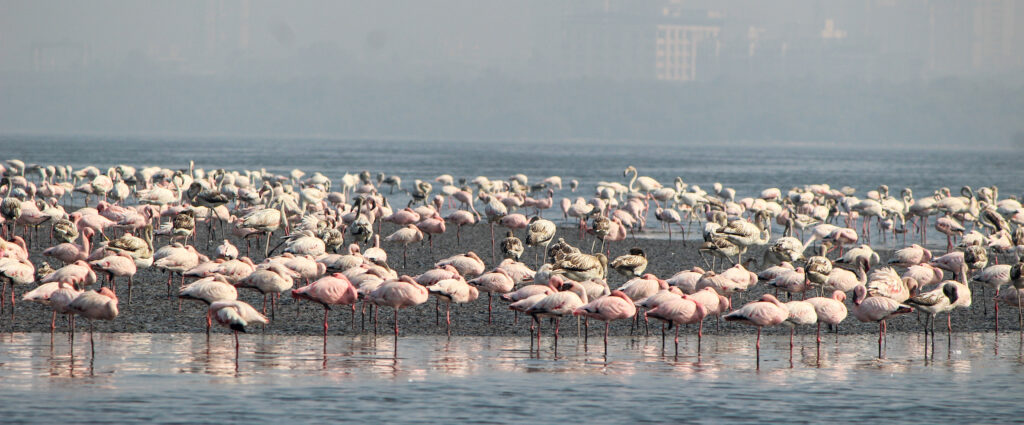


The boat was stopped some distance away to observe them. The flock of Lesser Flamingos which is more dominant in the region and feeds only on the algae was much larger than the Greater Flamingos which have a more cosmopolitan diet. They lowered their head into the water and moved it from side to side to collect the food. We were in complete awe to see the flamingos go on a royal walk and then take the majestic flight over the creek against the backdrop of urban skyscrapers.
Flamingos breed at Rann of Kutch in Gujarat and migrate to Mumbai where they reside till May. Until they are here, they keep the bird lovers and photographers at work.


Other Winter Birds Spotted in Bhandup Pumping Station Creek








NOTE - Please contact us for more information regarding the location, flamingo boat ride, etc. We will be happy to guide. Kindly email us at roamingwithroads@gmail.com




